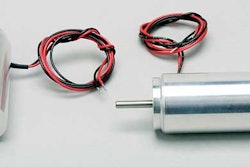Are data acquisition capabilities in today’s packaging lines more likely to be developed internally by packagers or do they come from outside suppliers? According to an exclusive survey conducted in April on Packworld.com, “developed internally” would appear to be the answer in more cases than not (see Chart 2).
Respondents also indicated that formatting of the data for extraction from the PLC is again more likely to be done by in-house technicians or engineers than by packaging machinery OEMs or a systems integrator (see Chart 3).
But maybe packagers would rather not bear quite so much responsibility for implementing packaging line data acquisition systems. Maybe they’d rather get more help from the supplier community. At least that’s what some survey respondents had to say in their answers to the first of two open-ended questions. The question read as follows: “What might packaging machinery OEMs do differently to facilitate data acquisition capabilities on tomorrow’s packaging lines?”
At least two comments from survey respondents suggested that packaging machinery OEMs could help facilitate data acquisition if they would, as one marketing manager at a food manufacturer put it, “Build data collecting technology into their machines.” Said a packaging professional from a pharmaceutical company: “Come in with ready-made packages as options at the time of purchase.”
One recommendation by survey respondents that surfaced more often than any other revolved around standardization. One viewpoint, from an engineer in the industrial products sector, was captured in a single punctuation-enhanced word: “Standardize!”
Others were a bit more chatty. “Agree on a standard protocol for formatting, acquiring, and exporting data in a PC-compatible format,” said a quality assurance officer at a food manufacturer. Said another respondent, an engineer from a beverage maker, “Make data available in standard format and standard protocol.” One respondent, a maintenance engineer from a chemical manufacturer, suggested that conformance to widespread notions of standardization should not be a capability bolted onto a packaging machine halfway through its development. “From initial concept,” he wrote, “design machines to interface on a standard communications platform.” Perhaps a similar wish lies behind the suggestion of a plant manager at a food plant who recommends that OEMs design machines having “Compatibility with other manufacturers for reporting purposes.”
A final note on the recommendations relating to standardization was this idea from an engineer at an industrial products company: “Standardize format through PMMI.” With more than 500 members in the United States and Canada, the Packaging Machinery Manufacturers Institute might not be a bad place to turn to where standardization is concerned. But even if members could agree that it was a good idea, what would non-members in Europe and Asia say?
Comparisons with processing, warehousing
The second open-ended question asked in the PW survey read as follows: “How would you compare data acquisition on your packaging lines with data acquisition in other parts of your operations such as continuous or batch processing or warehousing?”
The verbatim responses more often than not described data acquisition on packaging lines as lagging behind what is found in other areas of the manufacturing scene. “Nonexistent compared to what we have in mixing and batching,” is how a maintenance professional from a food manufacturer put it. And this from an engineer at a cosmetics/personal care company: “Packaging lines are not keeping up with data acquisition capabilities of our warehouses.” An engineer from an industrial products company put it this way: “Data acquisition on production is decent. But as usual, packaging is overlooked, and there is poor data available as it relates to packaging.”
A number of respondents expressed the opinion that data acquisition is inherently more difficult to implement on a packaging line than it is in other manufacturing areas. One packaging professional at a beverage company suggested this was pretty much unavoidable when a packaging line consists of so many individual pieces of equipment.
An engineer at a cosmetics/personal care company had this to say: “Packaging data acquisition is more difficult and costly to set up. It can be difficult to get technicians to use it properly if set-up is not easy enough for them to use.” The second half of this comment is echoed in Chart 5, where 37% of respondents said that lack of understanding by the people maintaining the packaging machines was the greatest impediment to maintaining the usefulness of a packaging data acquisition system.
A notable exception to the many comments about how packaging line data acquisition lags behind came from a purchasing officer at a cosmetics/personal care company. He described packaging line data acquisition as “much more sophisticated” than other areas at his firm. Because this comment ran counter to the prevailing response from nearly every other verbatim comment the survey netted, Packaging World phoned this individual to see if he’d share his and his company’s name and to ask for some explanation or elaboration. He declined to identify himself, but he didn’t mind sharing some observations about data acquisition on a batch processing operation compared to a packaging line.
“In batch processing, it’s mostly quality data that’s being collected. But on today’s packaging lines, thanks to the growing number of servo drive systems, you can pick up and monitor a whole bunch of information about your packaging machinery. Are we always efficient about collecting the data that’s available? We’re getting there, especially on the newest lines.
“By knowing what servo drives have to say about such things as position, frequency, and load, gains in productivity and efficiency can be made,” he continued. “You can get deeper into the condition of the line and the causes at work rather than just looking at mean time between failure.”
He concluded his remarks with a prediction about the importance of controls integration on packaging lines of the future.
“Much of the innovation you’ll see will be controls-related as we continue to move from largely mechanical systems to electronic line shafts, which might better be called ‘imaginary line shafts’ since all they really consist of is a bunch of interconnected servos.”
See sidebar to this article: Standardization made easy



























